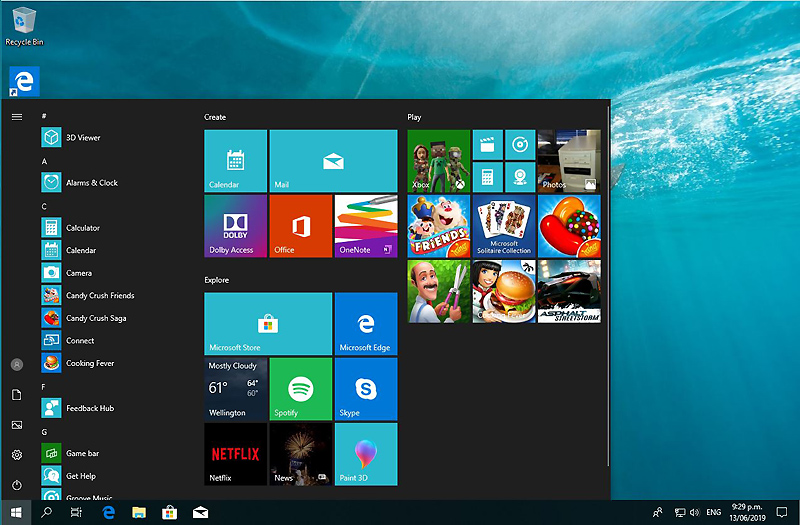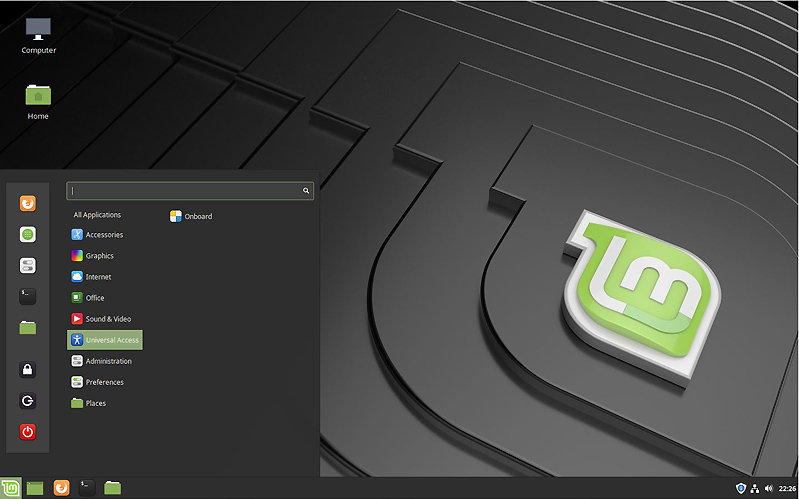| Tweet |
Linux as a good alternative to Windows for older computers
Introduction
Windows and I have grown up together. My first copy of Windows was version 1.0 when it was nothing more than a useless MS-DOS shell. I’ve seen it grow and evolve through the years. I’ve stuck with the various versions for my desktops and laptops, primarily because Windows/PC was the standard platform at work and (unlike Mac OS X) you could run it on inexpensive hardware. Also the software base was huge.
Windows largely did everything I wanted, and I never went seriously looking for another platform. Until recently that is. In the last few weeks I’ve been checking out Linux. This article shares the experience and might be useful to other Windows users looking for a desktop alternative for older (or indeed any) computer.
Keeping old hardware useful when Windows won't let me
At the time of writing, Windows 10 has some annoyances, even on modern machines. Installation puts a lot of crapware on your hard drive (Candy crush saga in Windows 10 Professional….really???). Windows (by default) sends a lot of "who you are and what you do" back to the Windows servers. Also there is a lot of pressure to use cloud services like Onedrive along with other Microsoft products.

Figure 1. Ugh! The crap you get with Windows 10
However I didn't seek an alternative because of the overt pushing of commercial services and products I didn’t want or need, nor the fact that Windows tracks my every move by default. I started looking at Linux for one reason and one reason only. I wanted to extend the life of older hardware and Windows simply wouldn’t let me do it.
Windows 10 requires a certain amount of grunt, and its requirements are getting higher. Older machines cannot cope. They run slowly and the computing experience becomes painful. These older machines are quite capable with Windows XP or Vista but you can’t buy licences for these products anymore (or for Windows 7 for that matter). Even if you have a licence for XP or Vista these products are not updated hence are considered security risks. Some major browsers (e.g. Chrome) no longer support them. To persist with Windows, the hapless user is forced to Windows 10, and in doing so is also forced to upgrade hardware…even if that old hardware is working just fine!
I had an old HP Compaq 8000 Elite from 2009. I wanted to pass this onto a relative in his late ‘50s who was computer illiterate, financially challenged and (now) somewhat disabled. A computer and the Internet would enhance his life tremendously. Windows 10 just wouldn’t cut it on that hardware. Even if it could, there was the license to be paid. I wondered if Linux would be a viable alternative.
I dived in. Here is what I found…
Linux. A smorgasbord of distros.
 I’m not going to explain what Linux is here. There are resources on the web that can do that. Suffice to say it is an operating system (OS) able to run on PC-type machines, but one which generally takes less resources than Windows 10 and is free and open source.
I’m not going to explain what Linux is here. There are resources on the web that can do that. Suffice to say it is an operating system (OS) able to run on PC-type machines, but one which generally takes less resources than Windows 10 and is free and open source.
Being open source means, unlike proprietary systems like Windows and Mac OS X, developers can customise Linux and release their own versions or “distros” (short for distributions). While the core of Linux (the kernel) is somewhat the same for every Linux variant, the supporting software (including that used for the interface) can vary widely. These distros are often tailored to specific types of user. At one end, a distro could be a server OS, managed largely by a command line interface. At the other end, it could be an OS for the desktop user, managed by a mouse-driven or touch graphical user interface (GUI) similar to Windows or Mac OS X.
There are MANY distros. A good site to keep track of them all is this one at distrowatch.com . It’s a fluid scene where new distros are born (or updated), and old ones die regularly! While this wide array of choice in the Linux world can be seen as a strength, it can also be a weakness. It dilutes resources and confuses end users. The inventor of the Linux kernel, Linus Torvalds recently weighed in on this, saying that this fragmented effort may be one of the reasons desktop uptake of Linux is so poor, despite being free.
Testing distros
Exploring Linux distros is usually easy. Most are distributed via downloadable ISO disk images. These can be written to a bootable USB stick or DVD/CD-ROM and can be run as a fully funtioning OS from those media. If you like what you see, you can then install the distro on your hard disk either as a companion OS (for Dual boot) or your main one.
Another alternative is to try them out first in virtualisation software like VirtualBox. However, if a virtualisated distro looks promising it’s a good idea to also try them out on the actual hardware they are destined for via USB or CD-ROM boot before committing to an install. That way you’ll be able to see if the drivers for graphics, sound chips, wireless hardware etc. work with the target hardware.
There is even a website where (if it's not overloaded) you can test a distributuion in a browswer!
Narrowing down the field to Linux Mint
I checked out a number of distros. After looking around, it seemed Ubuntu might be the version I was looking for. It’s tailored for desktop users, and is well-supported by a large team of developers. I keep looking though and finally settled on a derivative of Ubuntu called Linux Mint with the cinnamon desktop. Coming from Windows, I could really relate to this one. I found it easy to find things and get around. Installation was a breeze and it also gave me the option to install many tested and true 3rd party Linux applications. It appeared stable, well supported, and reviews on the web were very positive. It was also available as a 32-bit version for very old hardware.

Figure 2. Linux Mint 19.1 with the Cinnamon desktop
I installed on the HP Compaq 8000 Elite machine with no issues at all. Sound, graphics and wireless all worked out of the box.
My relative’s been using Linux Mint for 2 months now and is very happy with it. Even on the old hardware it’s fast enough to be usable, and will be updated when needed. Great!.
Final thoughts
Linux is still not perfect, as this site comprehensively explains. However, some distros are now mature enough to be practical desktop alternatives to Windows and Mac OS X. If the latter mainstream propriety operating systems no longer float your boat, or if (like me) you want to extend the life of some old hardware, consider one of the “desktop alternative” Linux distros. I chose Linux Mint, but it's parent Ubuntu is also pretty good. MX Linux or Zorin OS 15 (whose desktop is very close to Windows) are also worth a look.
Good hunting!
Terry Stewart
14th June, 2019
| Tweet |